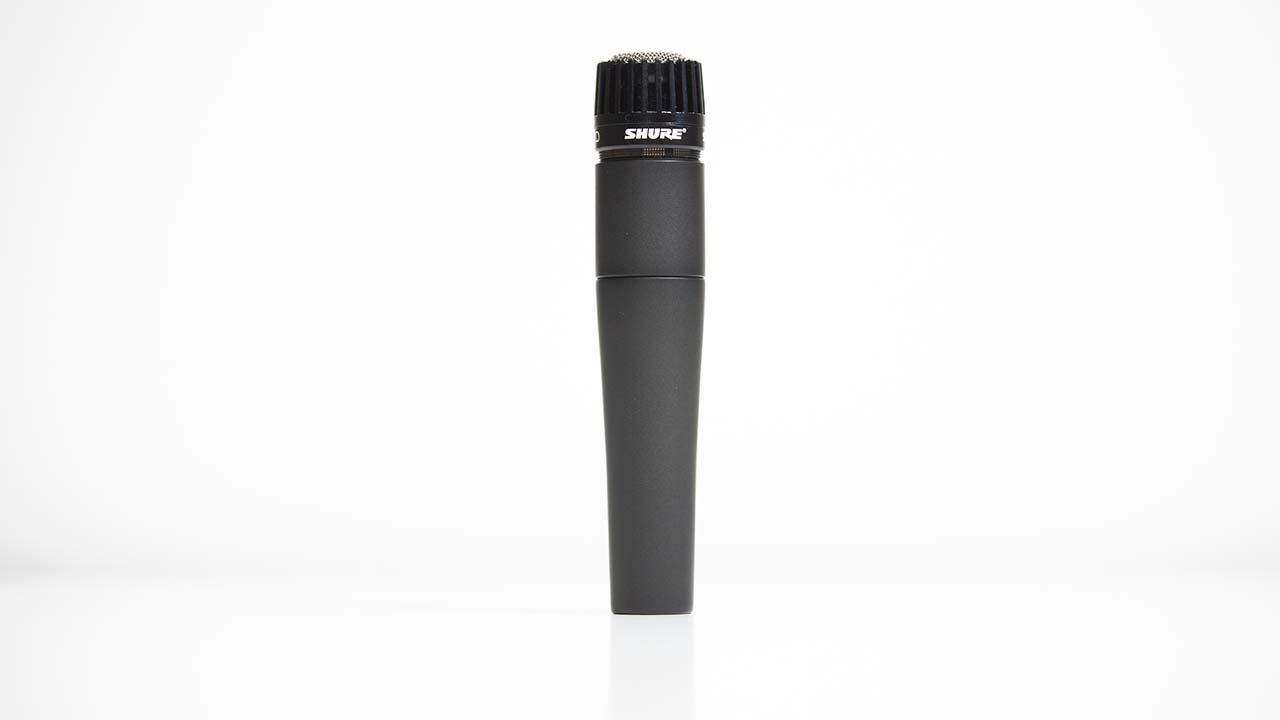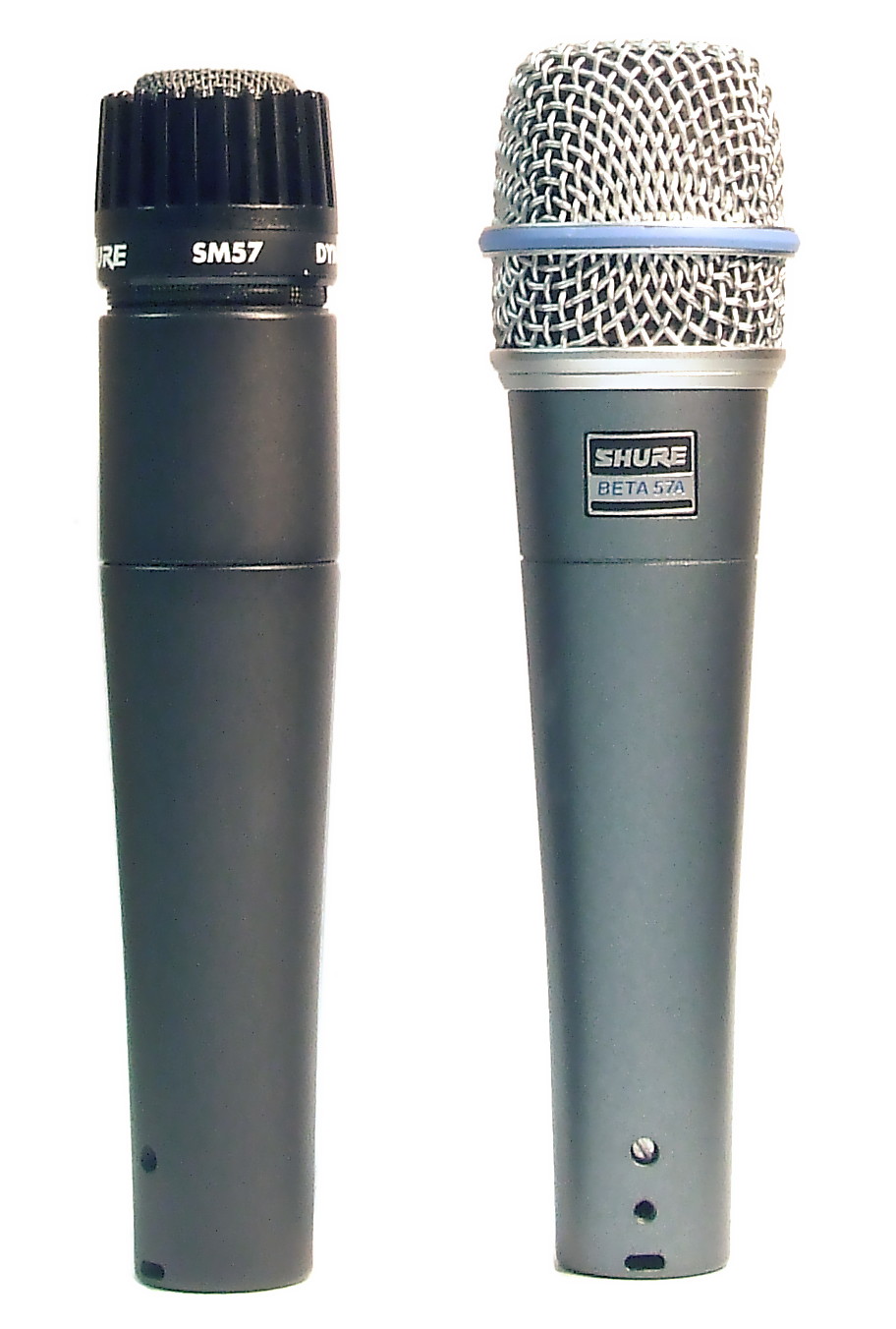Shure SM57 Dynamic Microphone Full Review | PROs and CONs
Aug 03, 2023
Beginners and pro musicians will often times have a very different studio setup, but they use some common studio equipment, including microphones.
Microphones play a crucial role in a studio, directly impacting the sound that will get into your DAW and out on platforms.
You can opt for any kind of mic — dynamic, condenser, or ribbon — that lives by your needs and expectations.
But what if a mic can do everything?
The Shure SM57 is a big name in the music industry. It’s been a staple for over five decades since its initial release date in 1965. It smoothly matches with amps and instruments and has fit a number of renowned artists, though not primarily designed for vocals.
From John Lennon to Bjork, from David Bowie to Tom Waits, many glaring names are logged in the Shure SM57’s history. Michel Jackson also performed the timeless ‘Billie Jean’ through an SM57. This hectic account gives the SM57 high credibility and enough vigor to carry on shoulder-to-shoulder with tech-heavy microphones in today’s market.
The sound character and tough construction are second to none and have paved the way for the SM57 to find its way into top-tier lists and reviews. In this post, I’ll give a complete review of the Shure SM57 and break down everything as below:
1. Benefits and Advantages of the Shure SM57
2. Disadvantages of the Shure SM57
3. Build Quality of the Shure SM57
4. Alternatives to the Shure SM57
5. Who I Think the Shure SM57 Is Best for
You’ll have a good grasp of all that the SM57 can do and, thus, a clearer prospect toward buying an SM57. So, without further ado, let’s jump right into it.
Overview of the Shure SM57
I always favoured the Shure SM57, and that’s why I keep one in my personal home studio.
As you hold it, you can feel the invincible persona that promises sustainability and reliability, thanks to the die-cast steel build. Being a dynamic microphone, the SM57 doesn’t require phantom power since it incorporates a different capsule that uses electromagnetic induction in order to generate electrical signals. This is a privilege that facilitates outdoor recordings and performances in remote locations.
The SM57 comes with the Unidyne III capsule, which produces a clean, industry-standard sound in detail. The capsule is derived from the iconic Shure 545 and empowers the Shure SM58 [Link to the SM58’s Review] as well. Because of that, the SM57 and the SM58 are roughly identical in sound quality.
A wider frequency response of the SM57 is due to the flat top, which makes it easier for the mic to capture more detail. Moreover, the cardioid pickup pattern ensures a focused audio reproduction as it rejects the background noise out of the primary zone. This is most helpful in live events where the crowd’s clamor and other instruments’ rattle are the highest while you need the least feedback.
Benefits and Advantages of the Shure SM57

The Shure SM57 offers a 40Hz-15kHz frequency response, which is slightly wider than that of the SM58. This gives the SM57 the upper hand for recording instruments and vocals as it delivers a more nuanced sound, and more details mean a richer outcome and more flexibility in the mixing stage. The wide frequency response is paired with a functional cardioid polar pattern with an excellent off-axis rejection.

As much as background noise and feedback are prevalent in live shows, so is the SM57 capable of taking care of them tactfully. Moreover, it’s super crucial for a mic to capture sounds with the least amount of bleeding from other instruments in a studio recording session, and the SM57 is just the right mic for handling such. This is one of the primary reasons many sound engineers prefer the SM57, especially for recording drums.

More on the SM57’s advantages, it can handle up to 150 dB of sound pressure, which makes the beast a more fitting mic than most condenser mics like the Rode NT1-A for recording drums and grating guitar amps painlessly. Shure has deftly designed the SM57 to last under tough conditions, be it unstable weather conditions or slack treatment. All these features have brought the SM57 global acclaim and a reputation that surpasses many fully-fledged brand-new microphones in today’s market.
Disadvantages of the Shure SM57
No studio equipment is exempt from at least a few downsides, regardless of their good reputation. That, however, can be only because of our expectations. Case in point, the SM57 lacks the kind of built-in features we can get in new microphones, such as filters or polar pattern adjustment. That being said, the SM57 comes with a couple of disadvantages you need to take into account.
Despite the broader frequency range, the SM57 can’t beat its cousin for vocal usage. That’s mainly due to the meshed grille at the tip of the SM58 missing on the SM57. Not only that function as a pop filter that reduces plosives dynamically, but it also dials down the proximity effect.
The SM57 appears sensitive to frequencies in the lower end of the frequency spectrum as you get the sound source closer to the mic. Moreover, the tonal characteristics of the SM57 might not appeal to your taste, although it has been used for vocal recording oftentimes. If you’re willing to equip your studio with an SM57 but also need it for vocal uses, you can customize it using an SM57 pop filter foam cover.
Another disadvantage of the Shure SM57 is the limited frequency range. Although we don’t often need anything above 15kHz or below 40Hz in the mix, some might be hunting for excessive frequency ranges for specific uses, or they could be just too picky to be content with the SM57’s offerings.
Additionally, amateur handling of the SM57 could result in handling noise or vibrations interfering with the main sound, which is due to the lack of a built-in shock mount. That said, you can prevent the SM57 from picking up these unwanted noises through the help of an external shock mount or simply treating the mic more gently.
Build Quality of the Shure SM57
The Shure SM57 exudes simplicity at first look; there is no switch or light of any kind, and the design is straightforward.
Nevertheless, you can feel exceptional build quality when you get your hands on it.
The 0.63 lb. Shure SM57 enjoys metal alloy in the body construction, which guarantees the SM57's longevity. It protects the capsule, circuits, and other internal parts against impacts and accidental drops, making the SM57 the one indestructible part of your studio equipment.
The SM57's flat grill isn't as bulky as that of the SM58 but is as resistant to blows and denting, thanks to the hardened steel mesh. What's more, the SM57's XLR connector is well built to be reliable both for the sake of the microphone and your workflow; it's recessed into the body, so it'll be safe and sound while also preventing accidental disconnections effectively. In a nutshell, you can't wreck the SM57 unless you smash it deliberately.
Alternatives to the Shure SM57
In case you're looking for an extra piece with resemblant characteristics or just curious as to which microphones can stand up to the legendary SM57, I've provided a 3-item list that includes some of the most favoured dynamic mics in the same pricing range that share a lot of grounds with the Shure SM57.

An improved version of the SM57, the Shure Beta 57A is meant to be an alternative to the legendary mic, and it does a superb job in taking such a tough responsibility.
The Beta 57A offers an extra 1kHz at the top end of the 50Hz-16kHz frequency range, which stirs up the competition with most condenser microphones. Besides, the Beta 57A gives a durable construction with the same level of durability and a supercardioid pickup pattern slightly better at off-axis rejection.
All that said, the key difference that hits the ears on the spot is the improved clarity and brightness in the output, which is the offshoot of the Beta 57A's presence boost around the upper midrange frequencies; this makes the SM57's successor a unique character that may fit vocals and instruments more easily. The trade-off would cost you an extra $50, and you need to evaluate your needs to see if the $150 Shure Beta 57A upgrades are worth the buck.

The $100 Sennheiser E609 is another dynamic microphone with a different look but similar characteristics. Aside from the exquisite silver finish, the unique design that sits a flat-profile capsule is a perfect match and many engineers' favorite for recording from cabs and drums. The E609 delivers A-quality sound in the exact frequency range of the SM57 extended from 40Hz to 15kHz. What's more, it has an upgraded supercardioid polar pattern which is niftier in off-axis rejection.
The high SPL level of 150 dB is also a privilege shared with the SM57, ensuring the German counterpart can withstand loud guitar amps and strong blows of drums. You can make the most with the E609 in your studio as well as in live shows; it's tough, reliable, and affordable, costing only $100 to keep the competition with the SM57 tight and alive.

This unidirectional dynamic microphone offers a lot of bang for the buck with the same $100 price tag as the SM57. The Lewitt MTP-440-DM's versatility is as sweeping as that of the SM57: it excels at capturing detailed vocals and perfectly tones with various instruments and guitar amps.
The MTP-440-DM offers a rugged build and balanced sound that sternly lives up to the SM57. "Punchy Sound for Drums and Amps," Lewitt describes the MTP-440-DM, which shows this workhorse is primarily aimed at getting paired with drums and amps. Nonetheless, you can depend on the MTP 440 for vocal recordings as well, thanks to the natural sound reproduction. It features a cardioid pickup pattern and triumphs over the SM57 by offering a slightly extended frequency response of 60Hz-16kHz.
If you're looking for a pocket-friendly alternative to the SM57 with integrity and unbiased behaviour, the Lewitt MTP-440-DM could be a potent option. It boasts fulfilling sound quality, low handling noise (they've done a great job on that), and sturdy construction that can live through the hardships of outdoor events. You can pull off recording sessions in the studio or impressive live shows using the MTP-440-DM without having to worry about physical damage, gradual decay, or technical issues like feedback.
Who I Think the Shure SM57 Is Best For
The Shure SM57 is undoubtedly one of the most cherished icons in its branch and has now become a benchmark for sound engineers and content creators as a means of comparison of brand-new mics. The reliable construction and natural frequency response has lifted its flexibility to a point where there's nothing you can't practically do with the SM57. It's also rare to stumble upon someone regretful about paying for the SM57, as it's both affordable and feature-packed.
I've allocated a whole article on the music production equipment that beginners need at the onset of their path, but if you're specifically searching for a one-size-fits-all microphone that can back you up within your home studio territory and in the live events, the Shure SM57 could be a suitable choice — if not the best.








